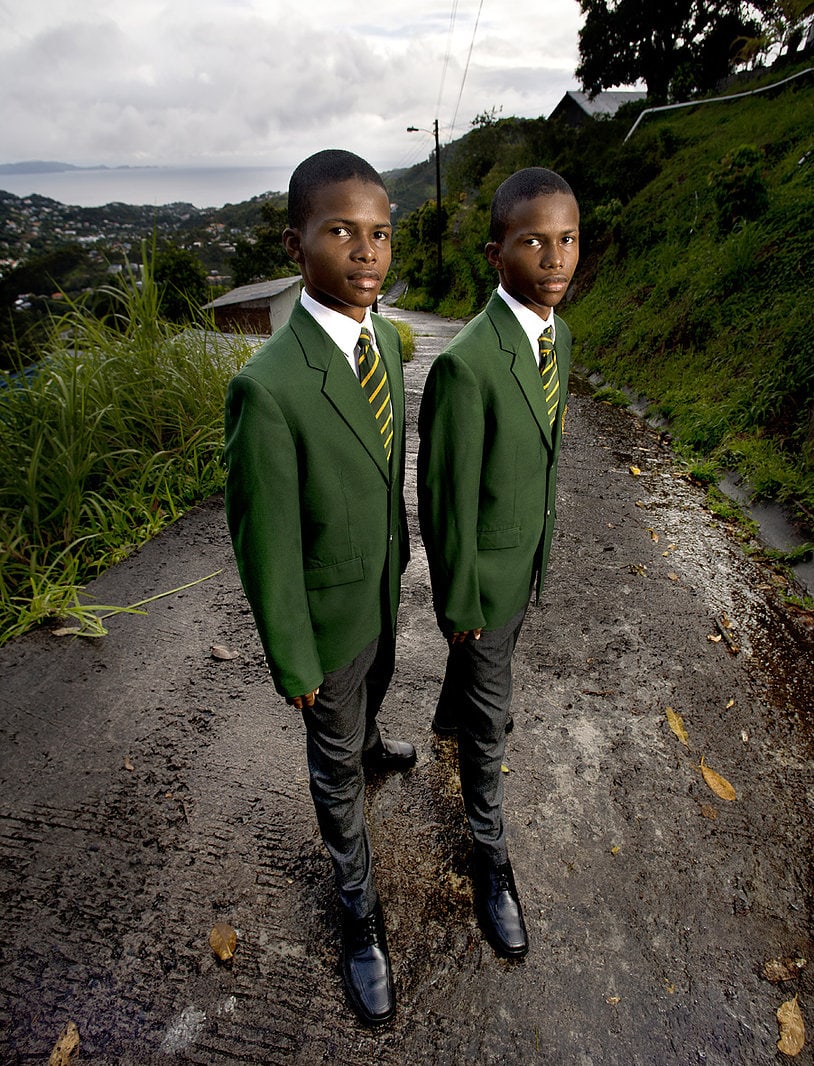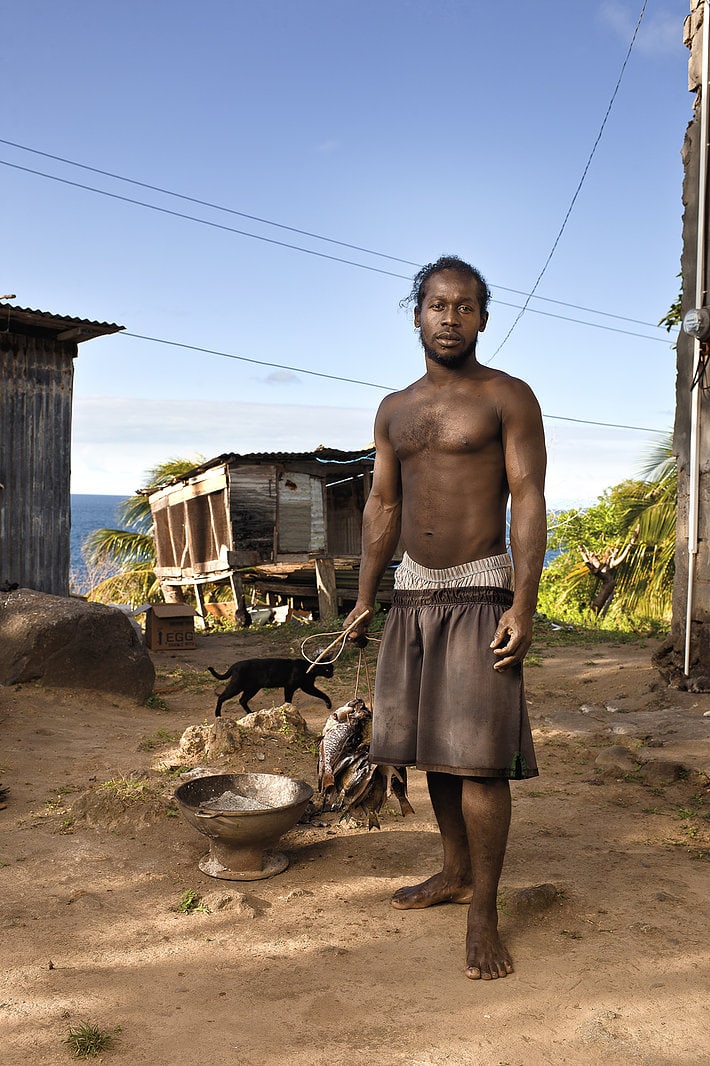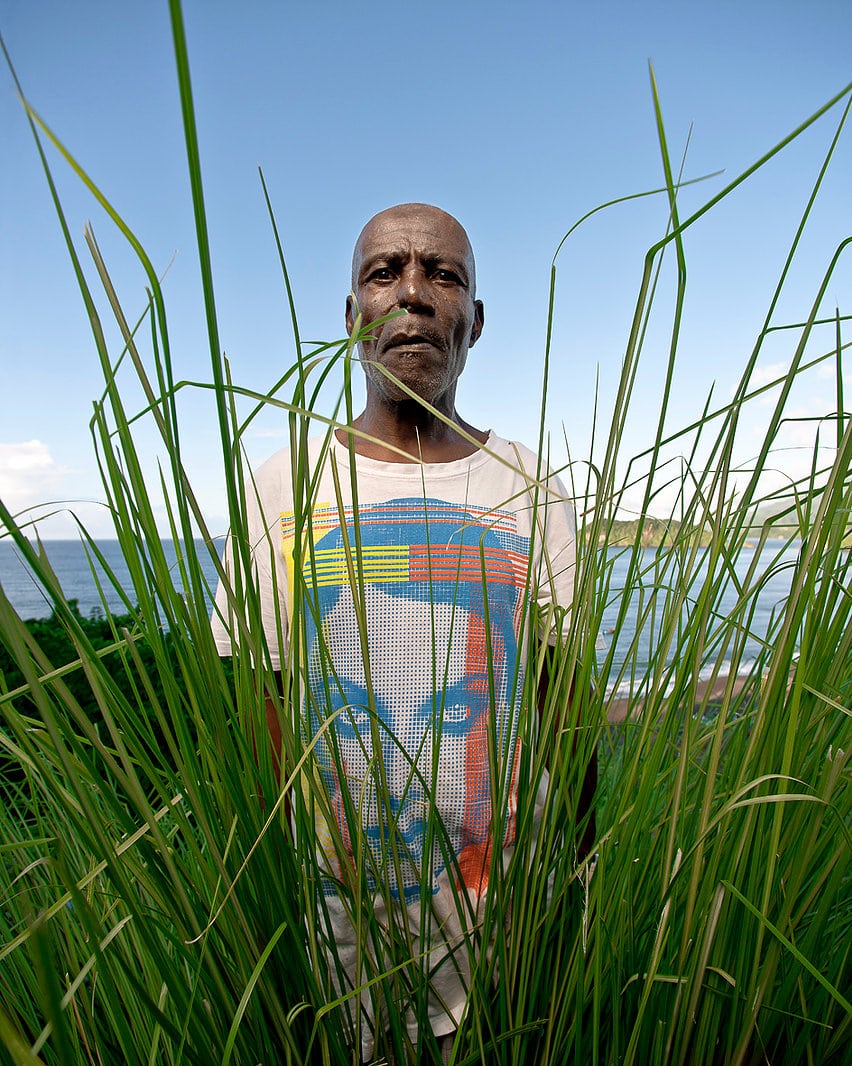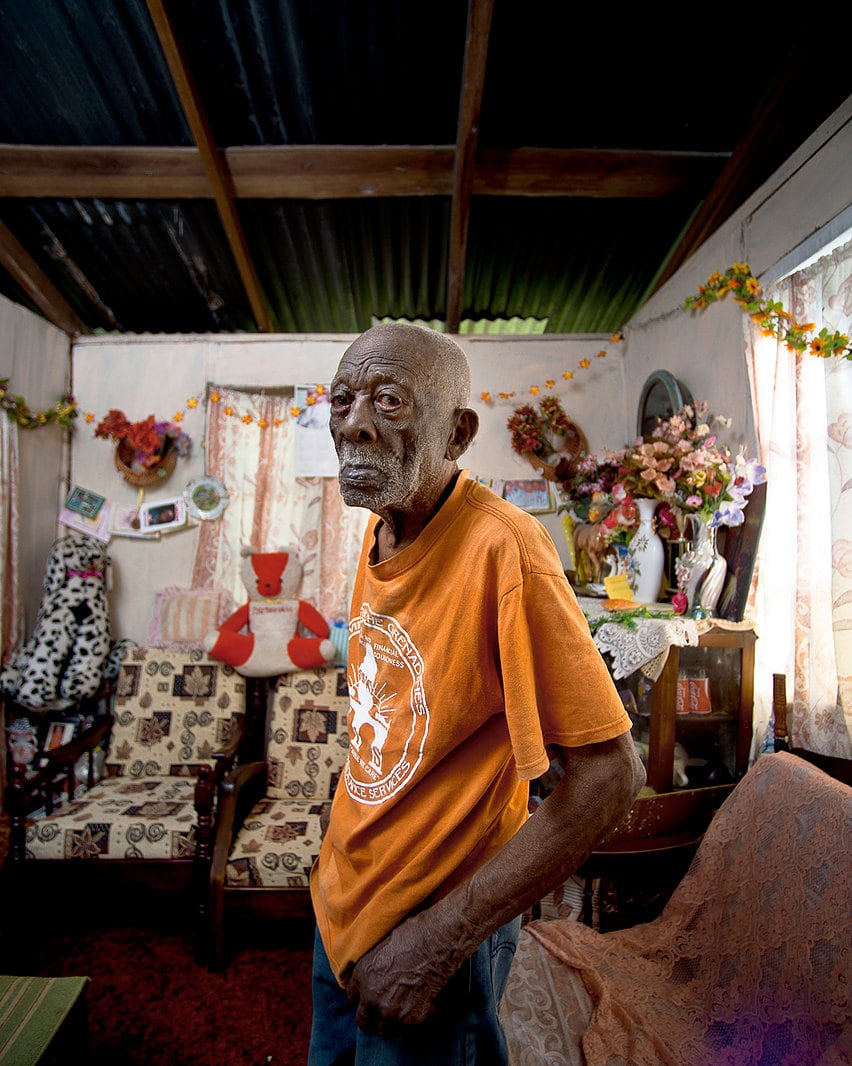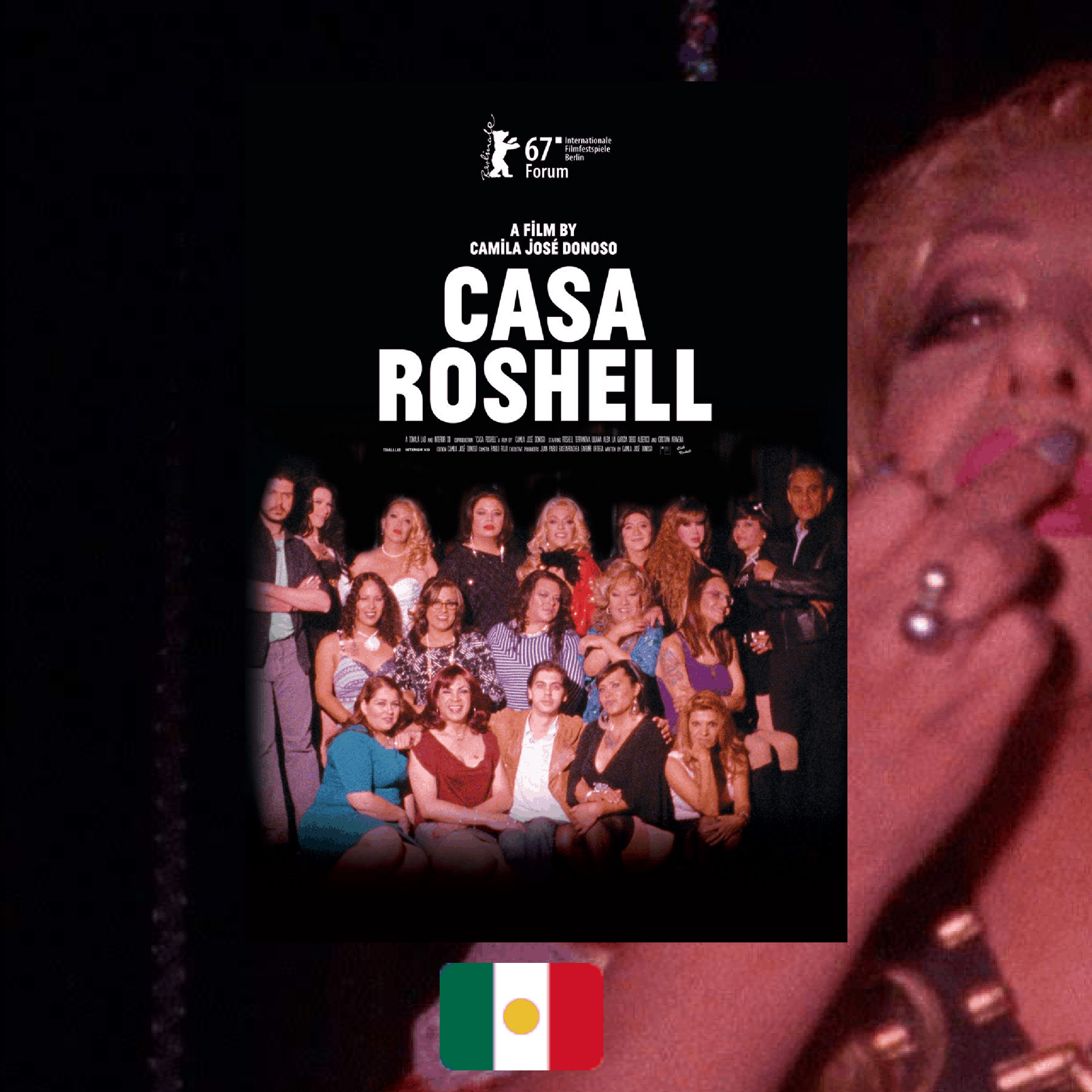Martinican photographer navigates the complicated, fraught history of black resistance in the Lesser Antilles, in the photographs he created during residencies on St. Vincent

M IS FOR MARTINIQUE and S IS FOR SAINT VINCENT AND THE GRENADINES
The history of the Lesser Antilles and its indigenous and free and enslaved black population remains plagued by omissions. It’s still not completely clear what the relationship between the indigenous Caribs of Saint Vincent of the Grenadines and the black populations were, that resulted in the people known as Black Caribs. But it is a fact that these indigenous, yet mixed people who spoke their own language in the Arawakan family, bravely fought colonization of the islands by the French and the English. Despite being exiled from the islands en masse, they have maintained presence on Saint Vincent and the Grenadines to this day: in their descendants, Garifuna people, currently numbering about 600,000 across the world, and still speaking the same language.
Robert Charlotte, a photographer from Martinique, began a residency in St. Vincent in 2014, amidst the Garifuna, and his portraits in the series are a powerful testament to similarity and difference, identity, pride and perseverance. Start looking at any of these portraits, and you get lost in the game of trying to establish what’s indigenous and what’s western. I particularly enjoy projects like this one because they simultaneously show that we are all one, as humans, but also that our differences are copious, impressive and to be celebrated.
For more content like this sign up for our weekly newsletter


